Original Source: Chasing Wind Lab
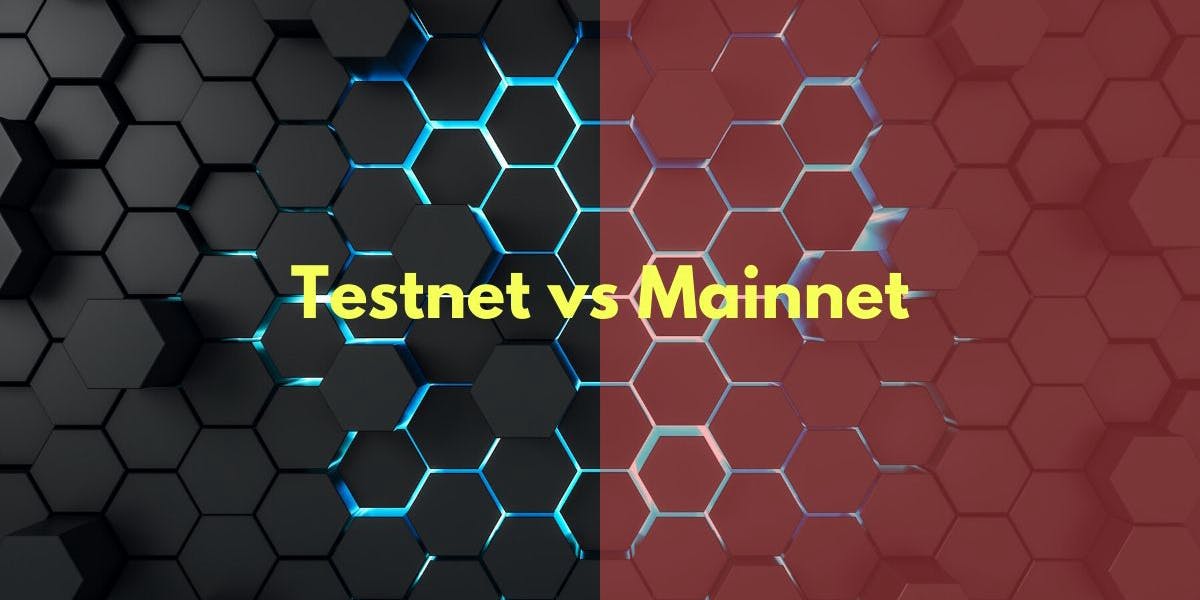
At present, various public chains have sprung up like mushrooms, among which the most representative ones are Meta systems such as Aptos, Sui, and Linera. Today, 31 unissued currency public chain projects (with tutorials) have been sorted out. If you are interested in collecting and paying attention.
1) Aptos

secondary title
Aptos is a new independent L1 blockchain project aimed at realizing our vision of providing the most secure and production-ready blockchain in the world.
Investors: a16z led the round, with participation from Binance lab Tiger Global, Katie Haun, PayPal Ventures, Multicoin Capital, Three Arrows Capital, FTX Ventures, Coinbase Ventures, etc.
Related introduction:
Official website:website link
Official Twitter:website link
Team information:website link
Official blog:website link
Related introduction:website link
Ecological project:Web links
Web linksWeb links
Official related actions:
Official related actions:
On April 22, Aptos Labs, the development team of the new public chain project Aptos established by Diem's former team members, reached a cooperation with Google Cloud. Developers can build Aptos nodes through Google Cloud. Development is ongoing, and support validators will be added in the future.
Registration for Incentive Testnet 1 (IT 1, Decentralized Launch) was opened on May 13, officially opened on May 16 and will continue until May 27.
Aptos, a new public chain project established by Diem's former team members, officially launched the incentive test network. Participating users need to use a valid Discord or GitHub account for identity verification, and deploy a validator to join the test network. Registration will end at 5:00 on May 20, 2022, Beijing time, and Aptos will issue test invitations at 3:00 on May 24, Beijing time.
On June 30, Aptos, a public chain project founded by Diem's former team members, announced the launch of the Aptos Ecosystem Funding Program to provide funds for teams, individuals and creators to accelerate the development of the Aptos ecosystem. Funding categories include: developer tools, SDKs, libraries, documentation, guides, and tutorials; tools and frameworks for development, governance, DeFi, and NFTs; core protocol contributions: token standards, libraries, protocol upgrades, and more; open source and public products ; educational initiatives; applications. Grant funds will be distributed in U.S. dollars, with the option to distribute tokens in the future to help incentivize long-term ecosystem growth for all parties, Aptos said.Launch of Aptos Incentivized Testnet 2 on June 30th. The deadline for registration is July 7th, and the official opening date is July 12th until July 22nd. ()
3. The scalability of Sui is not limited to transaction processing, it is also low-cost and horizontally scalable in terms of storage, enabling developers to define complex assets with rich properties that exist directly on-chain rather than off-chain.
2 )Sui

Sui, a next-generation smart contract platform with high throughput, low latency, and an asset-oriented programming model powered by Move.
Sui has the following features:
1. High scalability and instant settlement: Sui scales horizontally to meet the needs of applications.
2. Use the Move smart contract.
3. The scalability of Sui is not limited to transaction processing, it is also low-cost and horizontally scalable in terms of storage, enabling developers to define complex assets with rich properties that exist directly on-chain rather than off-chain.
4. Mysten Labs will also release the Sui Developer Kit open source toolkit.
4. Mysten Labs will also release the Sui Developer Kit open source toolkit.circuit diagram:
Official website:website link
Official Twitter:website link
Team information:website link
Official blog:website link
Related introduction:website link
circuit diagram:website link
Node Tutorial:Web links
Web linksWeb links
Official related actions:
Sui parent company MystenLabs investment institution:Medium。
Sui parent company MystenLabs investment institution:
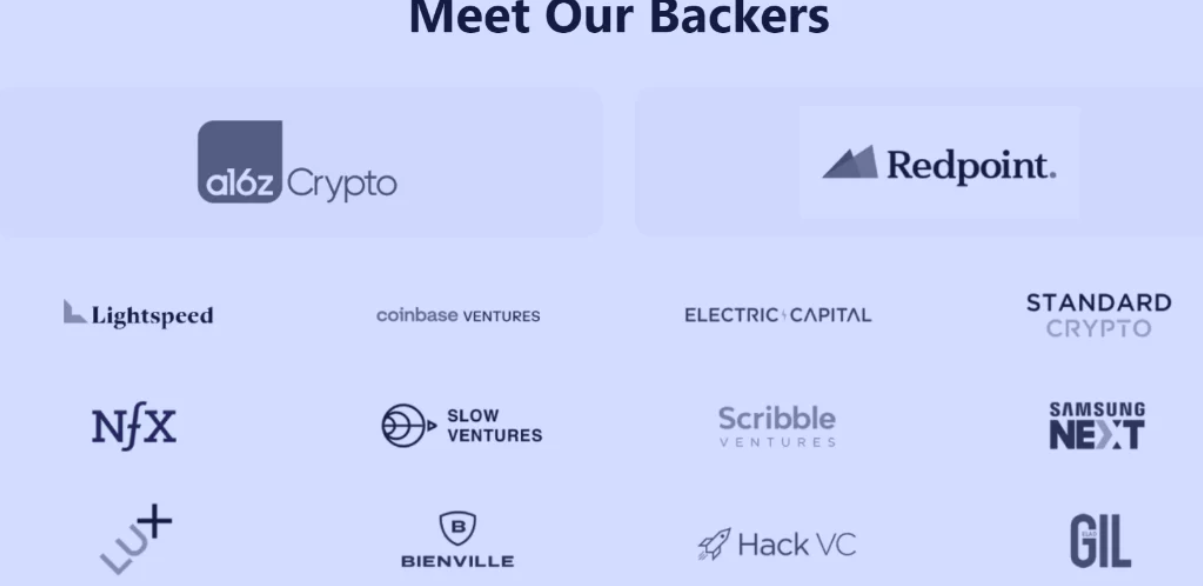
3 )Linera
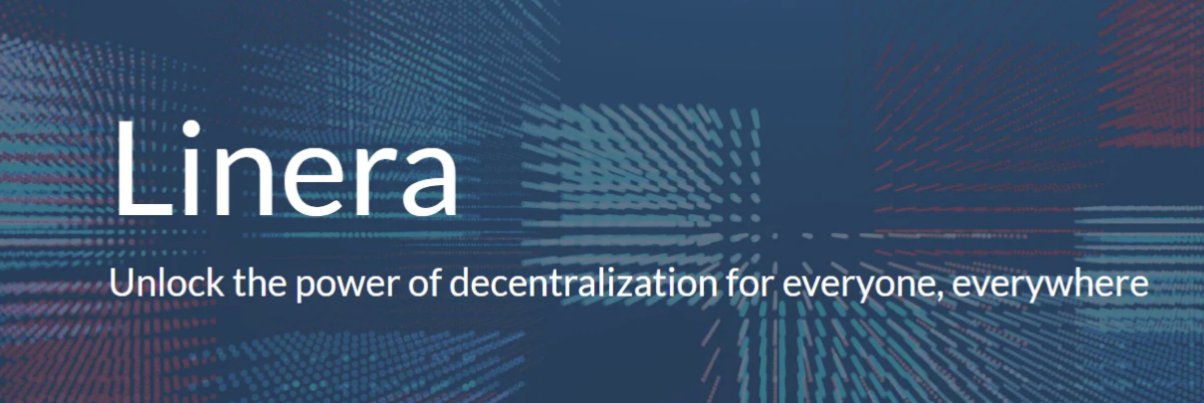
Aleo is positioned as a private public chain that supports smart contracts. Its technical core lies in the two core sectors of Zexe and Leo. The Zexe consensus protocol is improved on the original zk-snarks technology of ZeroCash. It can not only encrypt simple token transfer transactions, Interactive transactions at the application level are also possible; Leo, as the programming language of the Aleo ecosystem, can modularize the zk-snarks of the Zexe consensus protocol, so that any Dapp operating on the Aleo platform can use zk-snarks.
Official website:website link
Official Twitter:website link
Team information:website link
Official blog:website link
Related introduction:website link
CEO Mathieu Baudet tweeted:website link
4 )Aleo

ALEO is the first decentralized open source platform to support private and programmable applications. Using zero-knowledge cryptography, Aleo moves smart contract execution off-chain to enable a variety of decentralized applications that are both completely private and scalable to thousands of transactions per second. Aleo brings all the flexibility of Ethereum, but with a more scalable architecture where miners don't need to re-run every transaction, just verify its correctness.
Aleo architects a blockchain network with good user experience, privacy, good editability, and high performance, and provides a fully private application development platform to protect through a decentralized system and a zero-knowledge proof network User Data on the Web. Users can then enter a world of truly personalized web services without giving up control of their private data.
Aleo's founding team was formed in 2019. After nearly two years to complete the development of the underlying protocol framework, Aleo completed a US$28 million Series A financing in April 2021, led by a16z, Placeholder VC, Galaxy Digital, Variant Fund, Coinbase Ventures, Ethereal Ventures, Polychain Capital, Slow Ventures, Dekrypt Capital, Scalar Capital, Zero Knowledge Validator, and former Coinbase CTO Balaji Srinivasan participated in the investment.
In February this year, Aleo completed another US$200 million Series B financing, led by SoftBank and Kora Management, followed by a16z, Tiger Global, Samsung Ventures and others.
Aleo is positioned as a private public chain that supports smart contracts. Its technical core lies in the two core sectors of Zexe and Leo. The Zexe consensus protocol is improved on the original zk-snarks technology of ZeroCash. It can not only encrypt simple token transfer transactions, Interactive transactions at the application level are also possible; Leo, as the programming language of the Aleo ecosystem, can modularize the zk-snarks of the Zexe consensus protocol, so that any Dapp operating on the Aleo platform can use zk-snarks.
It is worth mentioning that in the first quarter, Aleo reached a cooperation with the blockchain game platform Forte (which raised more than 900 million US dollars last year), and the latter will use Aleo's solution to bring zero-knowledge proof into blockchain games.
Web links
Official website:website link
Official Twitter:website link
Official blog:website link
Test Tutorial:website link
Related introduction:Web links
5 )Iron Fish

secondary title
Introduction: The name Iron Fish comes from an encrypted communication system built by the United States based on Native American languages during World War II. The project hopes to demonstrate the magical power of cryptography. Iron Fish is a privacy blockchain network that aims to be a common privacy layer for all chains. Iron Fish is a decentralized, proof-of-work (PoW), censorship-resistant, and publicly accessible blockchain project. It is designed to provide strong privacy guarantees for every transaction. Similar to how the invention of the SSL/TLS layer in the 90s paved the way for e-commerce and benefited countless industries, we believe privacy is a fundamental requirement for protecting users and expanding the use of cryptocurrencies. We designed Iron Fish from the ground up as a new cryptocurrency that enables easy-to-use, fully private payments by strictly adhering to the Sapling protocol. Each account is equipped with a viewing key to grant its holder read-only access to the account details.
Currently, Iron Fish is still in the second round of incentive testnet stage, and this round of incentive testing will continue until the nodes are stable and fully functional, and all preparations for the mainnet launch are done.
Currently, Iron Fish is still in the second round of incentive testnet stage, and this round of incentive testing will continue until the nodes are stable and fully functional, and all preparations for the mainnet launch are done.
According to the plan, Iron Fish will open up cross-chain bridges with other mainstream blockchains in the future to provide privacy protection for other mainstream assets, so as to gradually realize its ultimate vision - becoming a privacy shield for the entire Web3 world.
Official website:
Official Twitter:Web links
Official website:Web links
Web linksWeb links
Test Tutorial:Web links
6 )Anoma

Anoma is a private PoS public chain promoted by the well-known venture capital Polychain Capital. Anoma Foundation is a blockchain technology company based in Switzerland.
Anoma is a structure for self-contained and autonomously coordinated protocols and mechanisms. Built on a foundation of advanced cryptography, programming language theory, and research, Anoma's primary goal is to facilitate private transactions using a digital representation of any value, regardless of who issued it.
Anoma is a structure for self-contained and autonomously coordinated protocols and mechanisms. Built on a foundation of advanced cryptography, programming language theory, and research, Anoma's primary goal is to facilitate private transactions using a digital representation of any value, regardless of who issued it.
The two core concepts of Anoma are "barter" and "privacy". The project hopes to build a privacy payment system that serves everyone, so as to truly return financial sovereignty to individuals.
The so-called "barter" means that Anoma hopes to create a network that allows any asset to be used as a means of exchange or payment, so that individuals can choose to use asset classes in transactions. It is worth mentioning that any asset here refers to any exchangeable goods, services, or anything that can be digitally represented with intrinsic value, including assets created on Anoma, other assets transferred to Anoma through interoperability agreements Chain assets, and legal tender in the form of stable coins, etc.
Official website:
Official Twitter:Web links
Official website:Web links
Web linksWeb links
7 )Altlayer
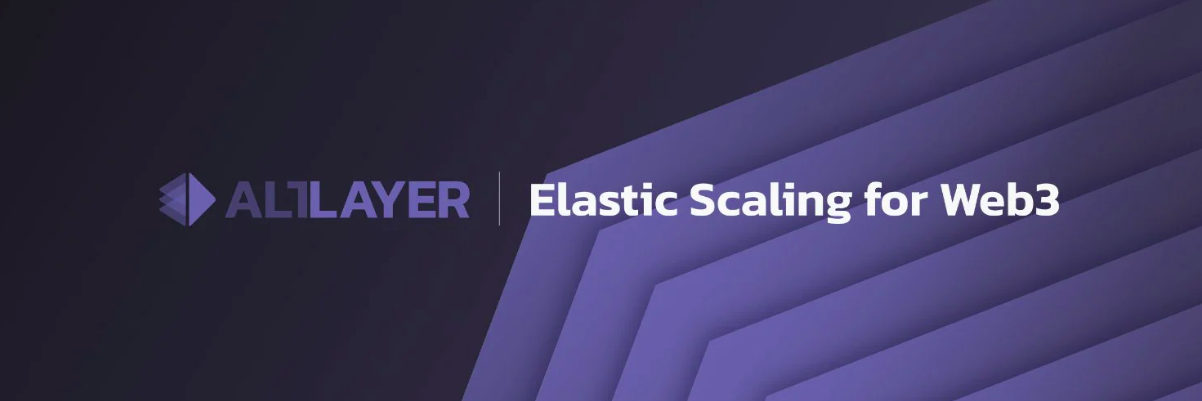
AltLayer is a temporary expansion layer based on OptimisticRollups, which is connected to Layer 1 and Layer 2 such as Ethereum, Solana, Polkadot, Cosmos, and even Arbitrum, Optimism, etc. AltLayer supports multi-chain and multi-VM, and supports EVM and WASM by default. Therefore, AltLayer will not be bound to a single Layer 1 or Layer 2, but can be used as a modular and pluggable extension solution for all EVM and WASM compatible chains.
AltLayer completed a $7.2 million seed round of financing, led by Polychain Capital, Jump Crypto and Breyer Capital, Polkadot founder Gavin Wood, former Coinbase CTO and former a16z partner Balaji Srinivasan, Circle co-founder Sean Neville, and Synthetix and Bodhi Ventures co-founders Kain Warwick and Jordan Momtazi also participated.
Official website:
Official Twitter:Web links
Official website:Web links
related articles:Web links
Web linksWeb links
8 )ESPRESSO Systems
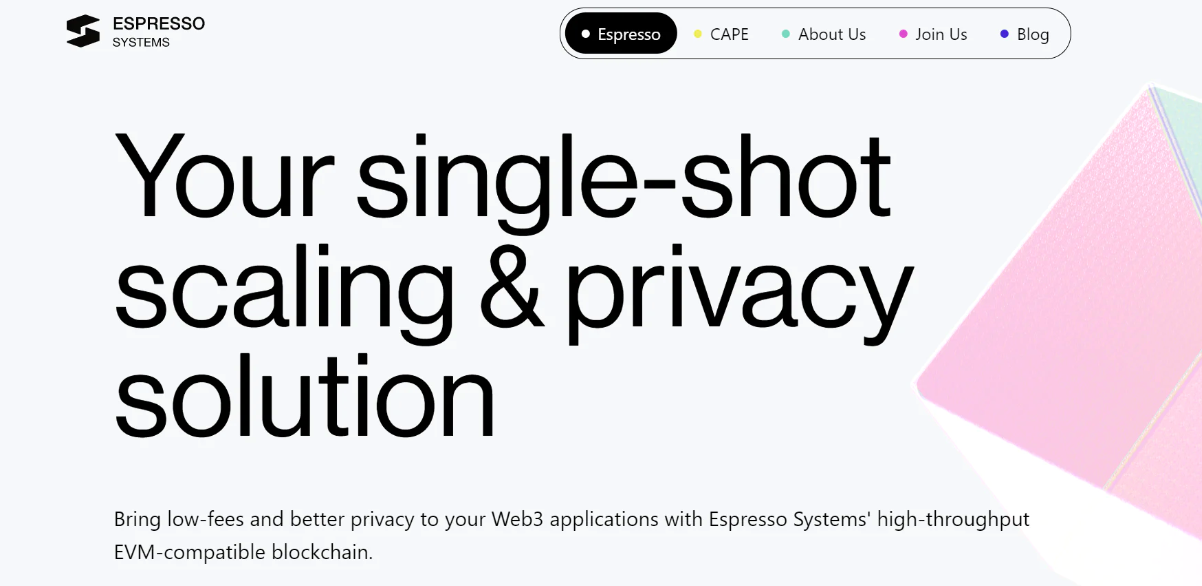
Official website:
Official Twitter:Web links
Official website:Web links
In mid-April (at that time, Jump hadn't been tossed to death by Terra), Keone Hon, head of research at Jump Trading, announced his resignation and founded Monad. Execution efficiency to unlock the potential of the EVM ecosystem. According to Keone, it is expected that the performance of Monad can reach more than 1000 times that of Ethereum, and it can carry more complex types of applications, thereby achieving wider adoption.Web links
Operation Tutorial:Web links
9 )Monad
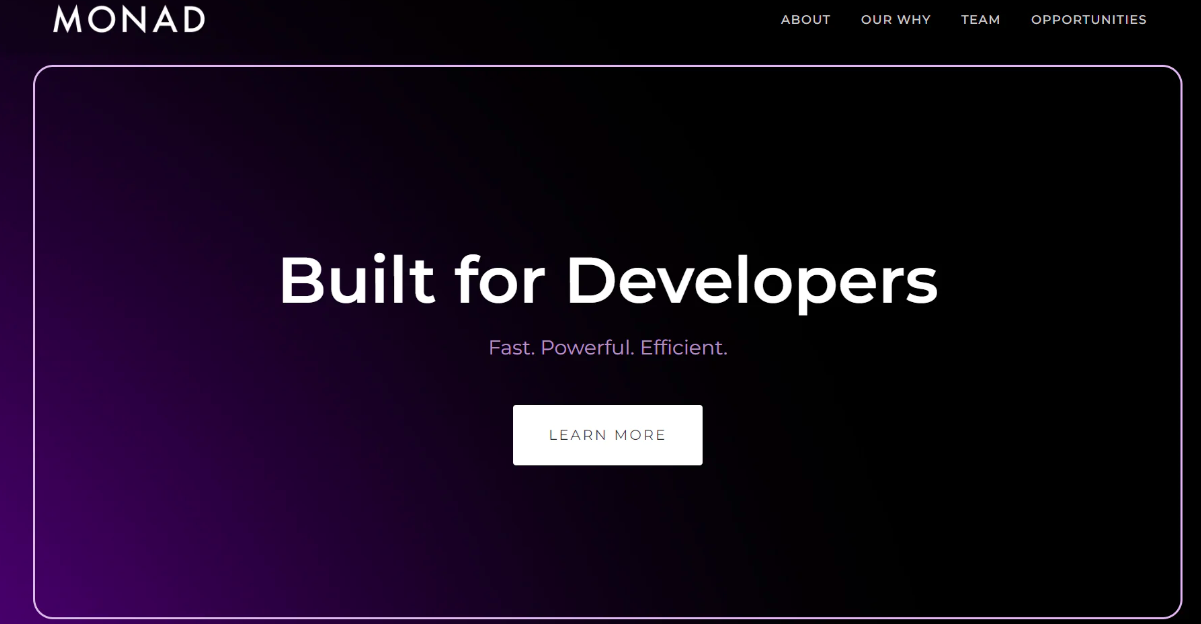
In mid-April (at that time, Jump hadn't been tossed to death by Terra), Keone Hon, head of research at Jump Trading, announced his resignation and founded Monad. Execution efficiency to unlock the potential of the EVM ecosystem. According to Keone, it is expected that the performance of Monad can reach more than 1000 times that of Ethereum, and it can carry more complex types of applications, thereby achieving wider adoption.
In Monad's view, thanks to Ethereum's sufficient user education, EVM has almost become a "standard" choice like Javascript in the web2 world. However, there are certain problems in the current expansion path of Ethereum. Both fragmentation and rollup will cause the blockchain to be divided into independent execution environments, thereby destroying the composability of the chain, so it is necessary to build a higher-performance underlying network.
Official website:
Official Twitter:Web links
Official website:Web links
Web linksWeb links
10 )Sei network

Sei Network is a Layer 1 blockchain built using the Cosmos SDK and Tendermint with a built-in Central Limit Order Book (CLOB) module.
Sei is a Layer 1 blockchain built specifically for this purpose. Applications on it can be built on top of CLOB, and other Cosmos-based blockchains can also use CLOB as a shared liquidity center to create markets for other assets.
Official website:
Official Twitter:Web links
Official website:Web links
Web linksWeb links
Operation Tutorial:Web links
11 )Gear
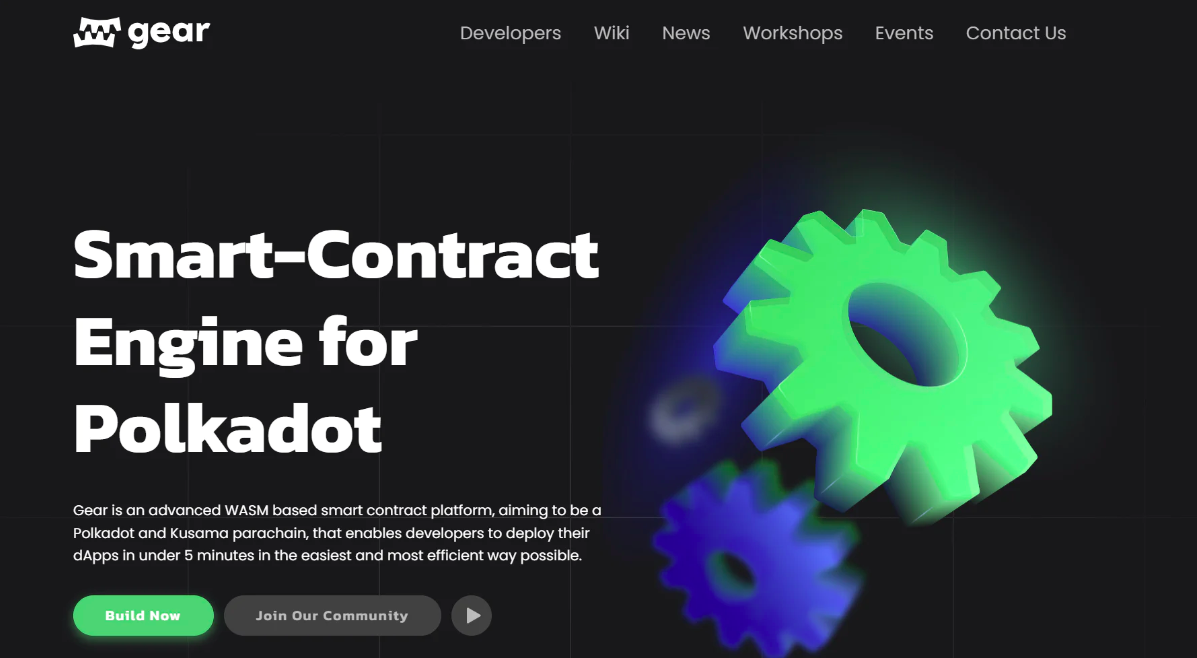
secondary title
Web links
Official website:Web links
Official Twitter:Web links
12) Celestia

secondary title
Celestia's former name was LazyLedger. Celestia is a very special Layer 1. The project positions itself as "the first modular blockchain network". Specifically, Celestia will modularize the technology stack of the blockchain network, and at the same time decouple the consensus layer and the execution layer. As a consensus layer, it will only undertake the work of transaction ordering and data availability verification. The specific transaction execution will be It will be distributed over other executive layer networks (such as Celo) linked to Celestia.
Celestia was co-founded by Mustafa Al-Bassam (UCL Blockchain Scaling PhD), Ismail Khoffi (previously an engineer at Tendermint), and John Adler (previously a layer 2 researcher at ConsenSys).
Participants in the seed round include Interchain Foundation, Binance Labs, Maven 11, KR 1, Signature Ventures, Divergence Ventures, Dokia Capital, P2P Capital, Tokonomy, Cryptium Labs, Michael Ng, Simon Johnson, Michael Youssefmir, and Ramsey Khoury.
Celestia was co-founded by Mustafa Al-Bassam (UCL Blockchain Scaling PhD), Ismail Khoffi (previously an engineer at Tendermint), and John Adler (previously a layer 2 researcher at ConsenSys).
Introduce the team:
Zaki ManianIntroduce the team:
Ethan Buchman— Co-creator of IBC and early Cosmos contributor
Morgan Beller— Co-Founder of Tendermint and Co-Founder of Cosmos
Nick White — General Partner of NFX, Co-Founder of Diem≋ (aka Libra)
James Prestwich — Co-founder of Harmony
George DanezisOfficial website:
Official Twitter:Web links
Official website:Web links
Fuel is the first Optimistic Rollup deployed on the Ethereum mainnet, and it is mainly suitable for payment-centric applications. The upcoming Fuel V2 will be based on UTXO's highly parallelizable minimal execution system and enable smart contract support, with Ethereum-style interoperable Turing-complete smart contracts, not just simple transfers.Web links
13) Fuel
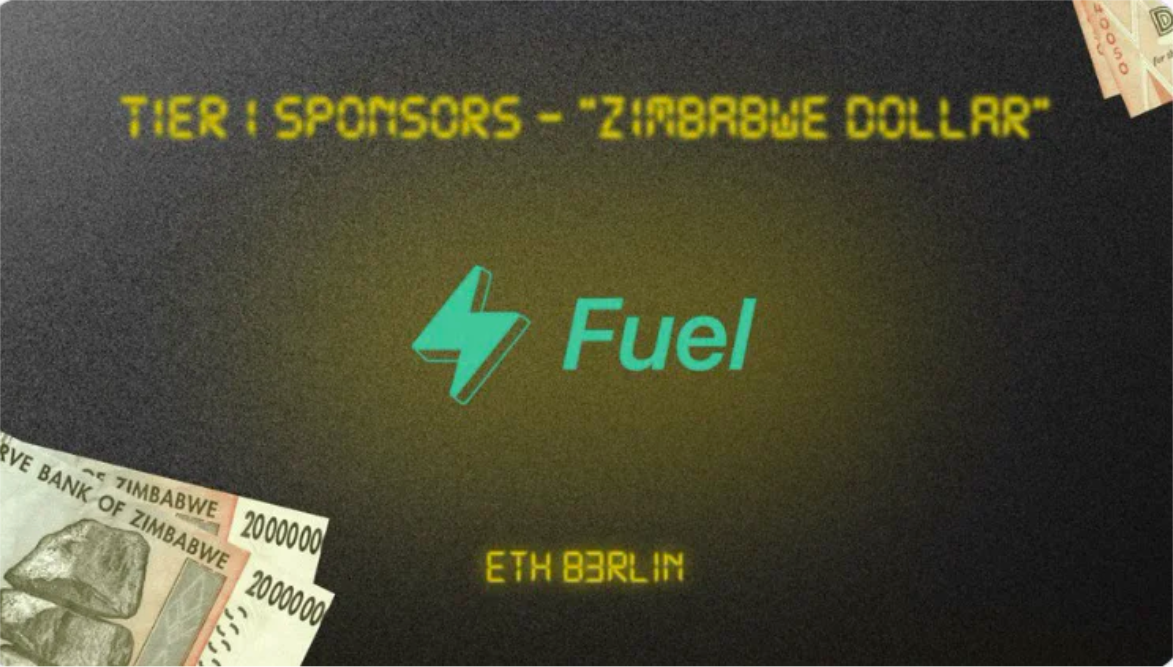
Fuel is the first Optimistic Rollup deployed on the Ethereum mainnet, and it is mainly suitable for payment-centric applications. The upcoming Fuel V2 will be based on UTXO's highly parallelizable minimal execution system and enable smart contract support, with Ethereum-style interoperable Turing-complete smart contracts, not just simple transfers.
progress:Fuel is a modular execution layer. In June, a developer network-based demo application, SwaySwap, was launched, which is an AMM.
Financing:In September 2021, $1.5 million in financing was obtained, led by CoinFund, with participation from Fenbushi Capital and Origin Capital.
Features:Fuel is the Optimistic Rollup of Ethereum, which initially expands the capacity of Ethereum through technologies such as UTXO (unspent transaction output). 1.0 is mainly suitable for payment applications.
However, after the launch of the main network, smart contracts may not be supported due to fewer use cases, and the amount of interaction is relatively small. So Fuel 2.0 began to transform into a modular execution layer. One of the co-founders of the project, John Adler, is also a co-founder of Celestia.
Official website:
Official Twitter:Web links
Official website:Web links
secondary titleWeb links
14) Polygon Avail
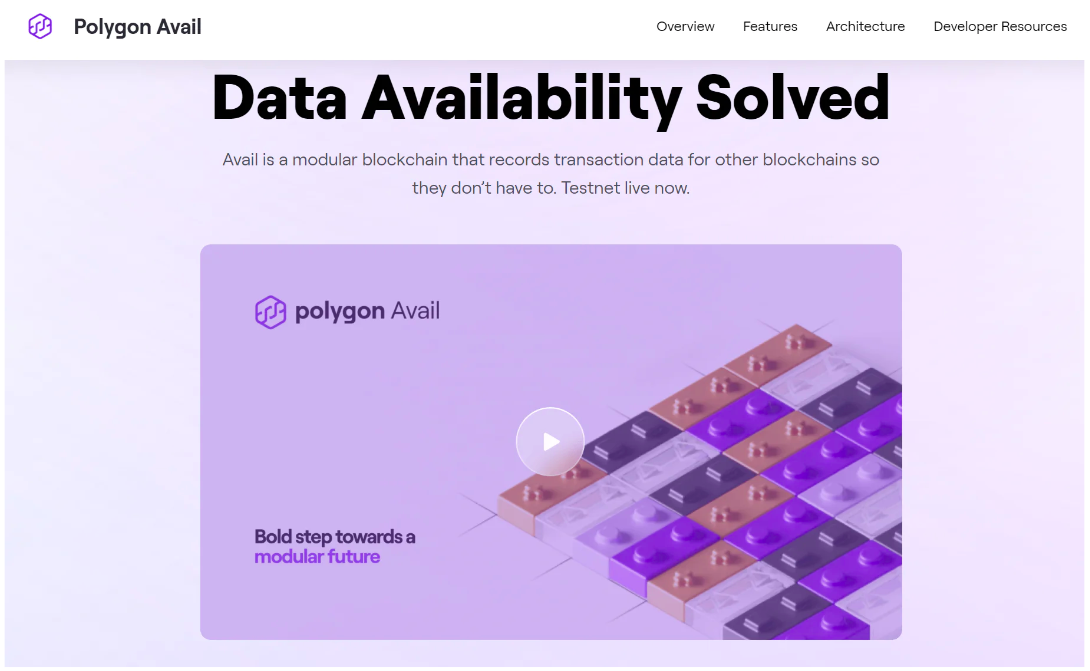
Polygon Avail's solution is very similar to Celestia's. In fact, Celestia co-founder Mustafa Al-Bassam has said that Avail is plagiarizing Celestia. Avail's introduction is an almost exact copy of the Celestia introduction it wrote in 2019.
Founder Sreeram Kannan put forward this point of view: the trust between blockchains and DAPPs is separated from each other, and each has to pay high capital costs to maintain ecological trust. For example, the Ethereum beacon chain now has more than 13 million ETH pledged. To maintain this pledge volume, Ethereum now provides about 5% APR for pledged users.
Official Twitter:Web links
Official website:Web links
15) EigenDA

EigenDA is a DA scheme proposed by EigenLayer. EigenLayer itself is the restaking layer of Ethereum.
Founder Sreeram Kannan put forward this point of view: the trust between blockchains and DAPPs is separated from each other, and each has to pay high capital costs to maintain ecological trust. For example, the Ethereum beacon chain now has more than 13 million ETH pledged. To maintain this pledge volume, Ethereum now provides about 5% APR for pledged users.
What EigenLayer does is the restaking of funds, allowing pledge users to pledge funds repeatedly to middleware, oracles, DAPPs, etc. in addition to PoS pledges, thereby improving capital efficiency and reducing trust costs.
Web links
Official Twitter:Web links
Official website:Web links
16) Assembly
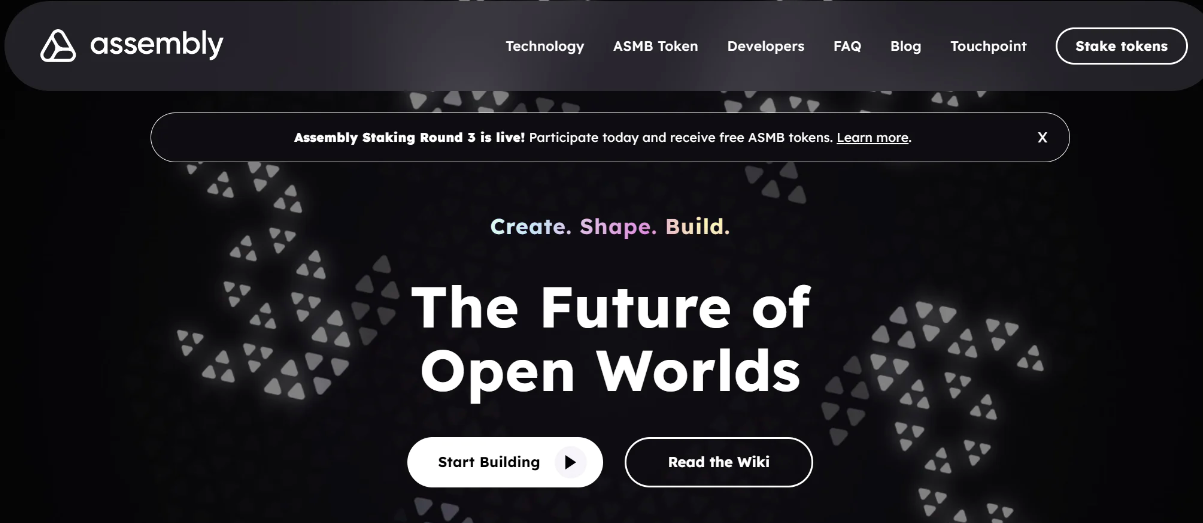
A modular smart contract layer on top of IOTA. Currently in pledge period 3. By staking MIOTA through firefly.iota.org, stakers can get 0.000001 Assembly token ASMB every 10 seconds. Wallets must have more than 1 ASMB to receive airdrops. 20% of the total ASMB supply will be allocated to IOTA stakers. Assembly's main network is expected to go live this year, and the ASMB transfer function will be opened at that time.
Financing:The total financing amount brings to $118 million. Investors include Huobi, LD Capital, HashKey Capital, Signum Capital, etc.
Features:In the combination of IOTA+Assembly, IOTA can achieve high performance because of UTXO and DAG. Because UTXO is not compatible with smart contracts, IOTA is very suitable for L1 that only focuses on DA and settlement (equivalent to no DAPP and execution layer competing for block space on L1). Assembly is a smart contract layer built on IOTA to support Rollup's smart contracts.
In the combination of IOTA+Assembly, IOTA can achieve high performance because of UTXO and DAG. Because UTXO is not compatible with smart contracts, IOTA is very suitable for L1 that only focuses on DA and settlement (equivalent to no DAPP and execution layer competing for block space on L1). Assembly is a smart contract layer built on IOTA to support Rollup's smart contracts.
The security of Rollup to the IOTA main chain (transaction validity/fraud proof) is checked by the smart contract chain specially deployed on Assembly, and the verification of transactions is carried out by root chain verifiers with top reputations.
secondary title
Official Twitter:Web links
Official website:Web links
17 )zkPorter

zkPorter is an off-chain DA solution proposed by zkSync. In June this year, zkSync launched the 2.0 testnet, with zkEVM and zkPorter as the two biggest features. The mainnet of zkSync 2.0 is expected to be launched at the end of October and early November.
Arbitrum launched the Nova chain in August, and the Nova chain is based on Anytrust technology. At present, the Nova chain has been launched on the main network. The official stated that Nova is suitable for high-frequency scenarios such as games and social networking, and is sensitive to transaction fees.
Official Twitter:Web links
Official website:Web links
18 )StarkEx DAC
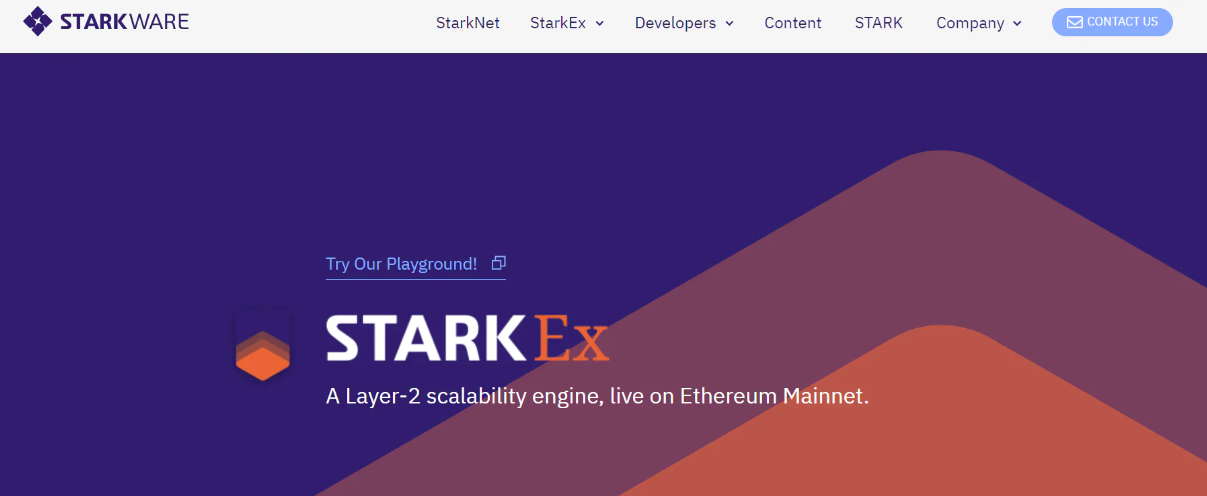
Official Twitter:Web links
Official website:Web links
19 )Arbitrum Anytrust

Arbitrum launched the Nova chain in August, and the Nova chain is based on Anytrust technology. At present, the Nova chain has been launched on the main network. The official stated that Nova is suitable for high-frequency scenarios such as games and social networking, and is sensitive to transaction fees.
Features:secondary title
Operation Tutorial:Web links
20 )Adamantium
Features: Adamantium is also an off-chain DA solution. Little information is available. Just know that it retains the scalability advantages of off-chain DA, but without trusting the Data Availability Committee (DAC), users can choose to host their own off-chain DA. Even if the user is offline, the funds will not be stolen or frozen, and can be automatically moved back to L1.
21 ) 5 ire

5 ire - Sustainable Distributed Computing 5 ire is a fifth generation blockchain with a mission to enable the transition from a for-profit economy to a for-profit economy. 5 The main goal of irechain is to create a user-centered sustainable development-driven ecosystem. This is achieved by embedding sustainability in the consensus mechanism architecture. 5 ire uses machine learning to track +700 ESG data sources in real-time to form sustainability scores for the chain's validators. 5 ireChain's transparent on-chain governance mechanism allows everyone to democratically participate in the network and propose changes to ensure reasonable and fair representation of all stakeholders.
Web links
Official Twitter:Web links
Official website:Web links
22 )Metabit
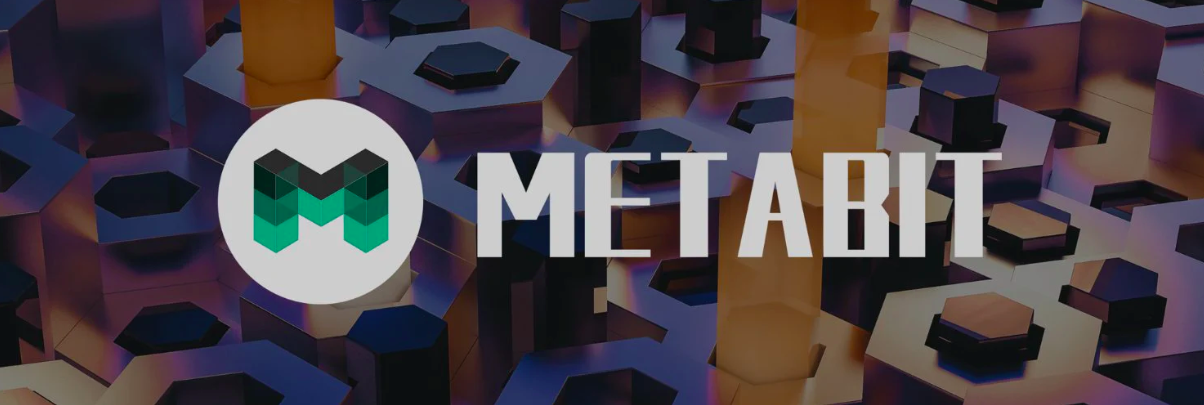
secondary title
Web links
Official Twitter:Web links
Official website:Web links
23 )Aztec

Introduction: Aztec Network is an open source layer 2 network that also brings scalability and privacy to Ethereum. It received a round of financing of 17 million US dollars led by Paradigm. If you are not familiar with it, then its The first Dapp
I believe that many people know about zk.money. Many people say that zk.money is a big deal, but it is not accurate. The so-called big deal should refer to the future token of Aztec Network.
Web links
Official Twitter:Web links
Official website:Web links
Operation Tutorial:
Migration of old users: old and new zk.money in Chinese versionMigration Guide
Its native token is RBT, with a total supply of 51,400,000 pieces, which is used to motivate miners. Rubix adopts the "Proof-of-Pledge" (PoP) pledge proof consensus mechanism, which is a lightweight algorithm with high scalability, instant verification and transaction finality speed of 253.5 M TPS.tutorial
24) Rubix
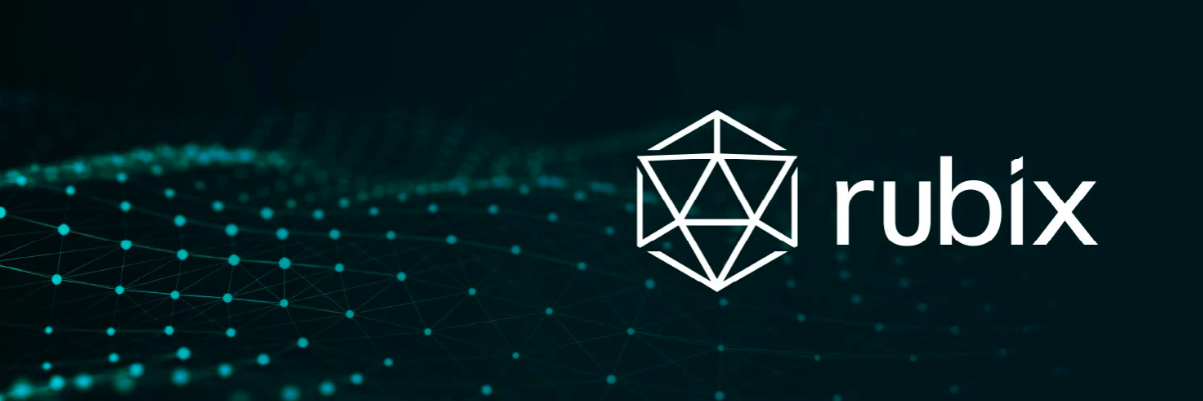
Rubix is a Layer 1 blockchain protocol for peer-to-peer data transmission and transactions, built by the Blockchain Association of Singapore (BAS), and recently announced that it has received a US$100 million investment from LDA Capital.
Its native token is RBT, with a total supply of 51,400,000 pieces, which is used to motivate miners. Rubix adopts the "Proof-of-Pledge" (PoP) pledge proof consensus mechanism, which is a lightweight algorithm with high scalability, instant verification and transaction finality speed of 253.5 M TPS.
Leveraging the unused CPU capacity of laptops, desktops, and mobile devices provides high scalability, eliminating double spending, gas fees, latency issues, or network congestion issues. Use "non-linear secret sharing" encryption technology to ensure privacy and security. Both applications and enterprises can build subnets in it, and its flexible subnet architecture can also meet the needs of data-intensive application enterprises.
Web links
Official Twitter:Web links
Official website:Web links
25) Zksync
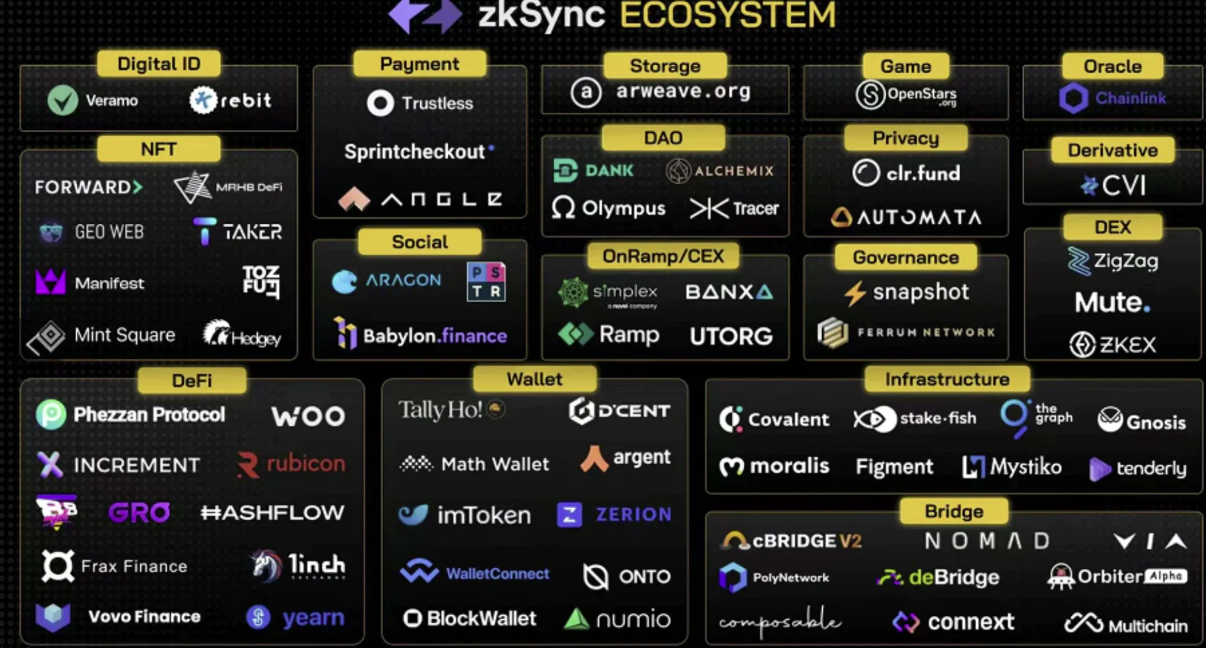
zkSync is Ethereum's scaling and privacy engine. Its current scope of features includes low-gas transfers of ETH and ERC 20 tokens in the Ethereum network, atomic swaps and limit orders, and native L2 NFT support. This document is a high-level description of the zkSync development ecosystem.
zkSync is built on the ZK Rollup architecture. ZK Rollup is an L2 scaling solution where all funds are held by smart contracts on the main chain, while computation and storage are performed off-chain. For each Rollup block, a state transition zero-knowledge proof (SNARK) is generated and verified by the main chain contract. This SNARK includes a proof of validity for each transaction in the Rollup block. In addition, the public data update of each block is released with cheap calldata through the main chain network.
Cross-chain tutorial:Web links
secondary titleWeb links
26) Arbitrum
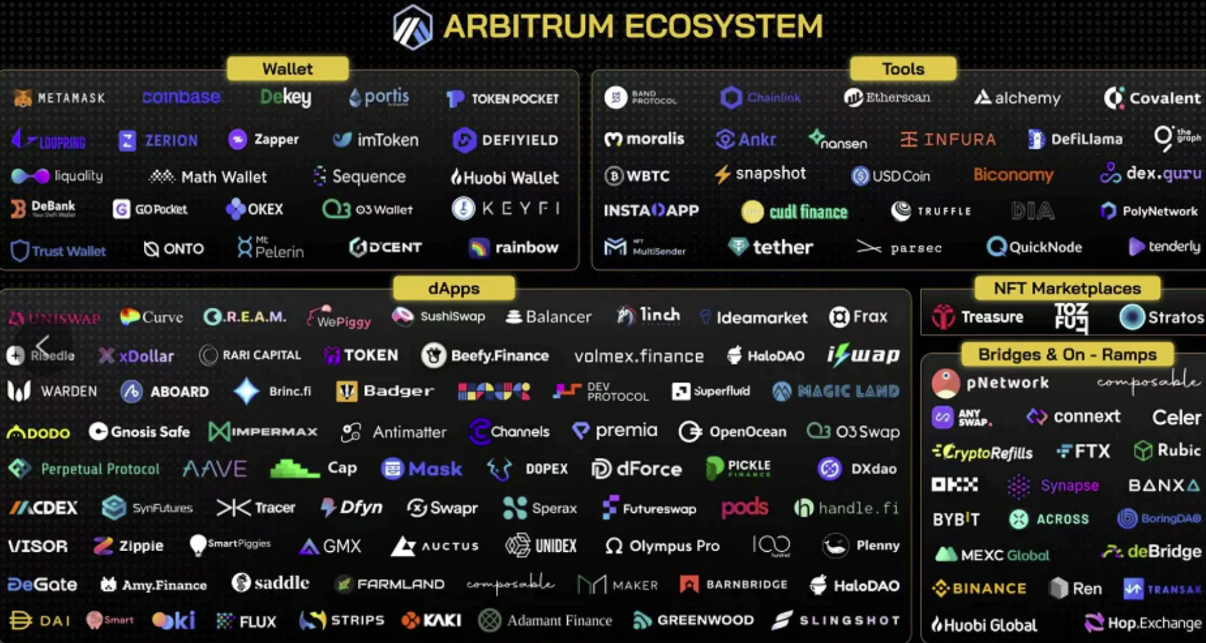
Arbitrum is an Ethereum scaling solution that enables high-throughput, low-cost smart contracts while maintaining trustless security. Arbitrum has three modes: AnyTrust Channels, AnyTrust Sidechains, and Arbitrum Rollup.
Cross-chain tutorial:Web links
Arbitrum Nova
Web links
Arbitrum Nova Tutorial:Web links
Ecological projects: dydx, sorare, immutable, deversifi, celer, argent, etc.Web links
27) StarkNet
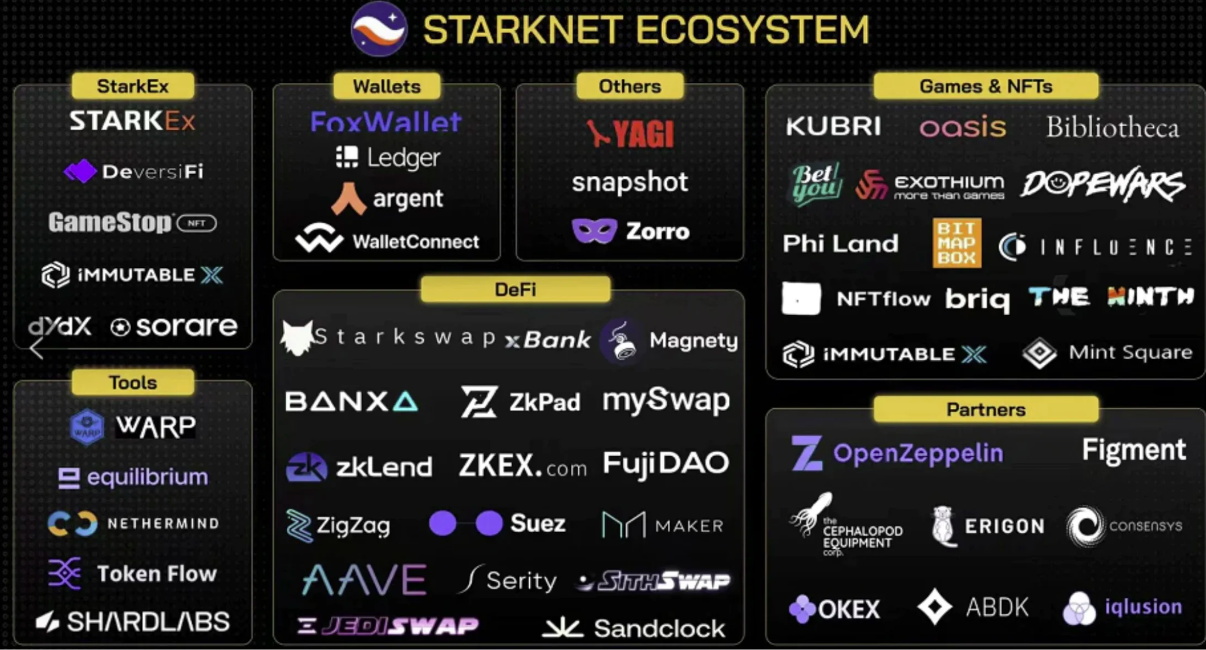
Financing: More than 2 billion knives, the investment lineup is luxurious, and V God is rumored to be an angel investor.
Data: The top brand of the ZK series, the data on the chain crushes other ZK series projects.
Technical route: StarkEx & StarkNet, technically took over a lot of the existing work of Ethereum, the core solves the problem of ability and reports the trust problem.
Ecological projects: dydx, sorare, immutable, deversifi, celer, argent, etc.
Layout logic: Interact with starkware and starkware dapps, Bo future airdrops.
Cross-chain tutorial:Web links
Web linksWeb links
28) Optimism
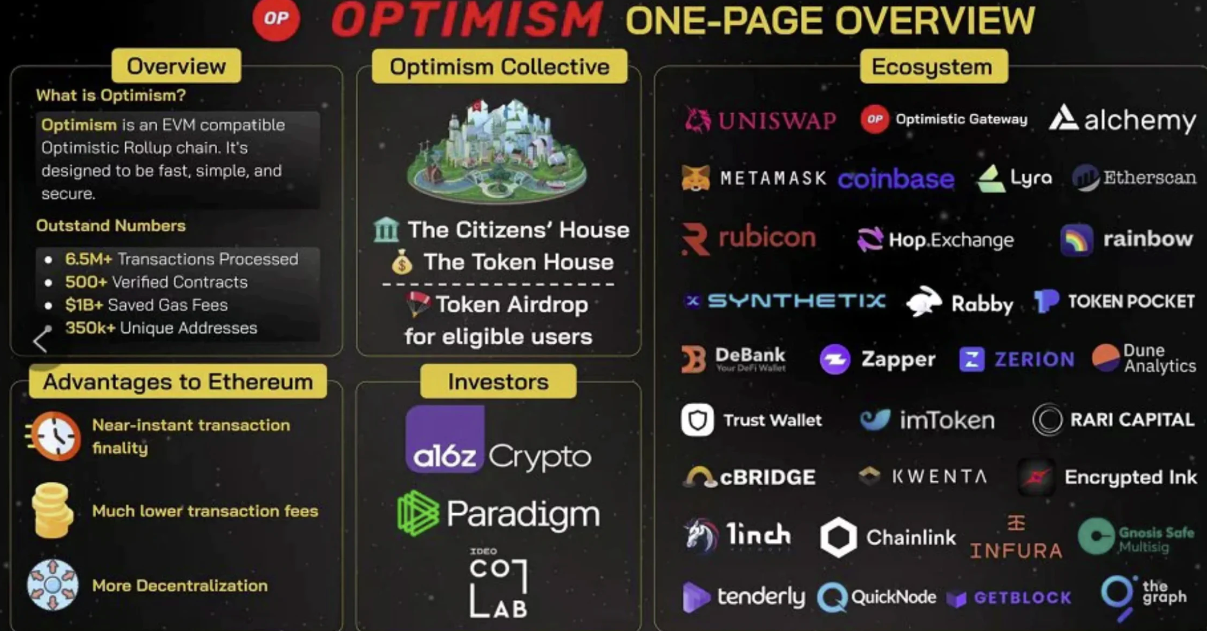
secondary title
Currently Milkomeda has released Milkomeda C 1 to provide EVM compatibility for Cardano. Milkomeda C 1 is equivalent to an intermediary, and the assets on Cardano are converted into encapsulated assets through Milkomeda C 1, such as ADA is converted into MilkADA. Encapsulated assets can participate in the Ethereum DeFi ecosystem, thereby expanding application scenarios.Web links
29) Milkomeda
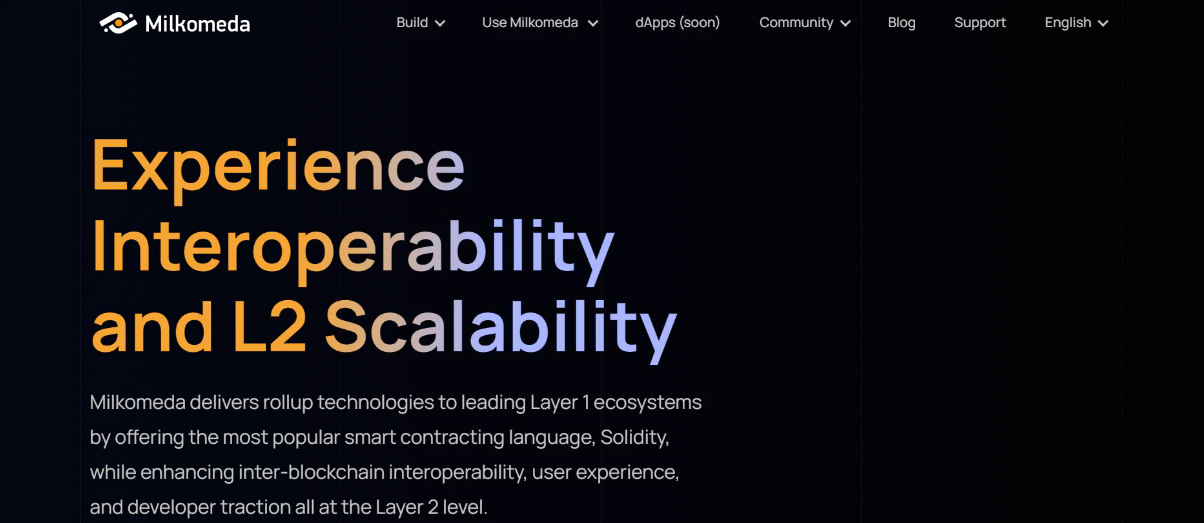
Milkomeda is essentially an EVM chain/layer that provides EVM compatibility for non-EVM compliant chains.
Currently Milkomeda has released Milkomeda C 1 to provide EVM compatibility for Cardano. Milkomeda C 1 is equivalent to an intermediary, and the assets on Cardano are converted into encapsulated assets through Milkomeda C 1, such as ADA is converted into MilkADA. Encapsulated assets can participate in the Ethereum DeFi ecosystem, thereby expanding application scenarios.
In addition to Cardano, Milkomeda has also released Milkomeda A 1 Rollup on the Algorand public test network. The Solana ecosystem will also be supported in the future.
Web links
Official Twitter:Web links
Official website:Web links
Operation Tutorial:Web links
30 )Scroll

Scroll is a Layer 2 Ethereum expansion network. It has received a $30 million A round of financing led by Polychain Capital, BainCapital Crypto, Robot Ventures, Geometry DAO and some members of the Ethereum community. Team member Sandy Peng graduated from the University of Cambridge. Co-founder Ye Zhang said that he was doing ZKP research four years ago. Haichen Shen studied in Tsinghua Yao Class for undergraduate and Ph.D. from University of Washington. His research direction is biased towards the field of underlying systems.
In order to solve the current high gas costs and frequent congestion problems faced by Ethereum, everyone tries to put the settlement layer on Ethereum and transfer the execution to Layer 2. Scroll uses zk-Rollup, which is recognized as the best expansion solution for Ethereum. Technology, while possessing the security of Ethereum, greatly increases the transaction speed. However, zk-Rollup is not friendly enough for developers. It needs to use a special programming language R 1 CS to write smart contracts, which increases the learning cost of developers. Moreover, it does not support composability and has limited functions.
Deeply incubated by the Octopus network of the NEAR ecosystem and Web3 infrastructure, the project adopts the Proof-of-Streaming (PoSR) streaming cloud rendering verification consensus protocol to provide MaaS (Metaverse as a Service) infrastructure for streaming games and interactive content, creating Cloud native protocol.
Official Twitter:Web links
Official website:Web links
Operation Tutorial:Web links
31 )Portalverse

Portalverse Network is a decentralized cloud gaming metaverse network, recently completed a multi-million dollar seed round of financing invested by Big Brain Holdings, Cogitent Ventures, Octopus Venture Dao, and 2 Moon Capital.
Deeply incubated by the Octopus network of the NEAR ecosystem and Web3 infrastructure, the project adopts the Proof-of-Streaming (PoSR) streaming cloud rendering verification consensus protocol to provide MaaS (Metaverse as a Service) infrastructure for streaming games and interactive content, creating Cloud native protocol.
In terms of the economic model, Portalverse transforms high costs into the benefits of different participants in the ecosystem through the distribution and payment of Token. Users can set their game devices (graphics card and CPU) as nodes to participate in network construction, and will also receive their Token POV as potential income.
Official website:
Official Twitter:Web links
Official website:Web links
The above is for learning purposes only, not as investment advice.